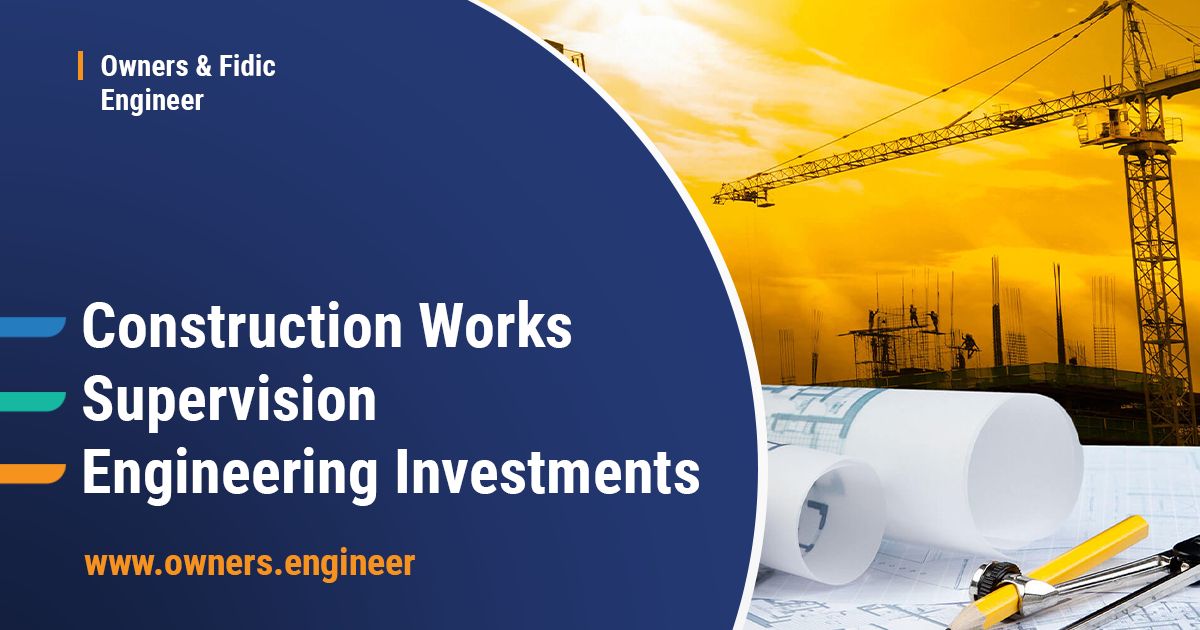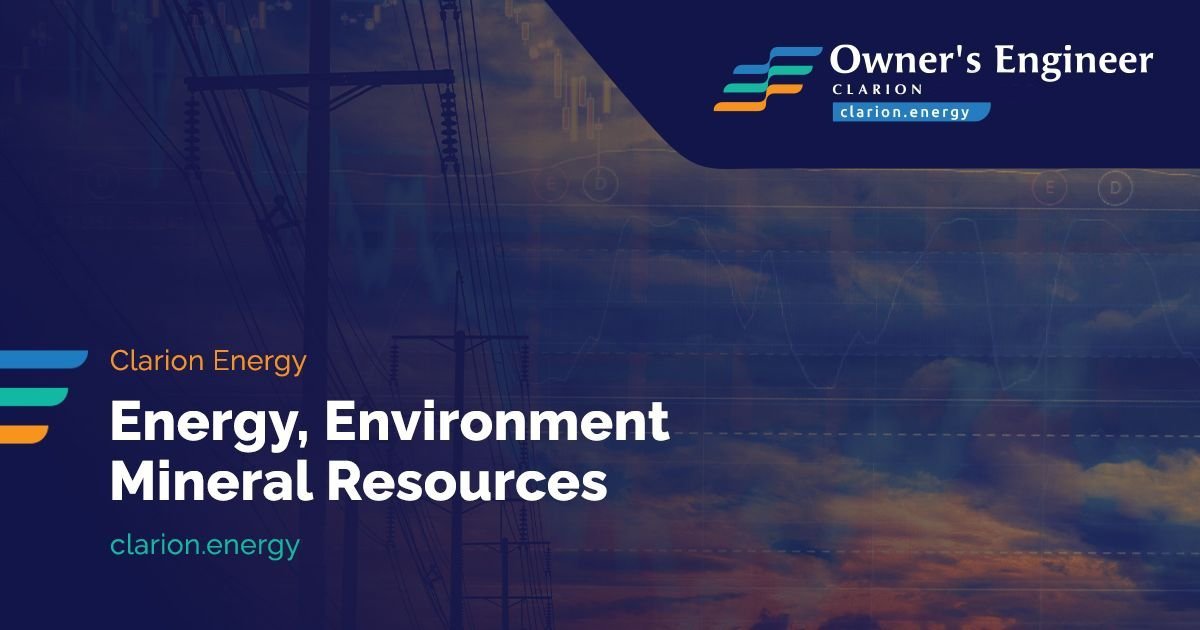Behind every wind farm, factory, or transmission line lies a web of financing. Modern infrastructure projects are rarely financed from a single balance sheet — instead, they are structured through project finance, where banks, export credit agencies, and international financial institutions (IFIs) provide the bulk of the capital.
In this system, money only flows as risk becomes measurable. That is where the Owner’s Engineer (OE) steps in — not as a designer or builder, but as a technical auditor and risk custodian trusted by financiers.
The OE’s signature on a progress report or a test certificate can unlock tens of millions of euros in disbursement.
It is the assurance that engineering progress equals financial safety.
The lenders’ perspective: Capital protection through technical oversight
Banks and IFIs (EBRD, EIB, IFC, DEG, Proparco, etc.) provide financing based on structured milestones, environmental and social safeguards, and performance guarantees. To safeguard their capital, they require a Lenders’ Technical Advisor (LTA) or Owner’s Engineer — independent professionals who translate technical realities into financial risk language.
Key responsibilities of the OE or LTA for lenders
- Technical due diligence (Pre-financial close):
Assessing design, cost estimates, permits, and implementation feasibility before the loan agreement is signed. - Construction monitoring (Post-financial close):
Verifying progress, quality, and compliance with design and contract conditions.
The OE’s monthly or quarterly reports directly determine loan drawdowns. - Change control and claims analysis:
Evaluating cost/time impact of variations, delays, or force-majeure events. - Testing and commissioning verification:
Witnessing Factory Acceptance Tests (FAT), Site Acceptance Tests (SAT), and performance trials.
Only successful testing unlocks final loan tranches. - Environmental & social (E&S) compliance:
Ensuring the project meets IFI standards (e.g. EBRD PRs, IFC Performance Standards, Equator Principles).
In essence, the Owner’s Engineer becomes the technical eyes and ears of the lender — ensuring that every euro or dollar disbursed corresponds to measurable, certified progress on the ground.
The Owner’s Engineer as a risk management instrument
Risk in infrastructure projects is multidimensional — technical, financial, contractual, environmental, and reputational.
The OE’s job is to integrate all these aspects into a coherent control framework.
Core Risk Categories Managed by the Owner’s Engineer
| Risk Type | Typical threat | Owner’s Engineer mitigation measure |
|---|---|---|
| Design Risk | Errors or non-compliance with standards | Independent design review, peer checks, verification against EN/IEC norms |
| Procurement risk | Substandard or incompatible equipment | Technical evaluation, factory inspection, FAT witnessing |
| Construction risk | Delays, poor workmanship, safety incidents | Schedule monitoring, QA/QC audits, HSE inspections |
| Interface risk | Gaps between civil, electrical, and mechanical works | Interface matrix management, coordination meetings |
| Financial risk | Cost overruns, unjustified claims | Quantity verification, change-order validation |
| Operational risk | Underperformance after commissioning | Performance tests, reliability runs, O&M documentation checks |
| Environmental/social risk | Non-compliance with IFI safeguards | Continuous ESG monitoring and reporting |
The risk management cycle
- Identification – Assess risks during design review and due diligence.
- Quantification – Estimate impact and likelihood for lender risk models.
- Mitigation – Implement control measures (design changes, QA, audits).
- Monitoring – Track through site visits, tests, and document reviews.
- Reporting – Communicate to Investor and Lenders in standardized format.
Each OE report effectively becomes a risk register in motion — tracking exposure as the project evolves.
IFIs and their requirements: A structured framework for risk control
International financial institutions (such as EBRD, EIB, IFC, and KfW) apply highly structured frameworks for project evaluation and risk mitigation.
For them, technical risk = financial risk.
Hence, they mandate independent engineers to verify all technical aspects.
Before financial close
- Technical due diligence (TDD)
The OE reviews feasibility studies, EPC offers, and cost breakdowns to ensure realistic budgets and achievable schedules. - Permitting & compliance check
The OE validates that environmental impact assessments (EIA) and building permits meet IFI and EU regulations. - Bankability review
The OE advises lenders on design reliability, lifetime assumptions, and maintenance costs — influencing loan tenor and debt-service ratios.
During construction
- Monitoring & progress certification
Each disbursement requires OE confirmation of achieved milestones, quantities, and quality. - Change management control
The OE evaluates claims and variations, ensuring only justified changes are financed. - Environmental & social safeguards
Continuous verification of compliance with EBRD’s Environmental and Social Policy or IFC Performance Standards (PS1–PS8).
Post-completion
- Performance verification
The OE witnesses testing and confirms that guaranteed performance levels are met (e.g., MW output, efficiency, emissions). - Final acceptance & warranty oversight
The OE ensures final as-built documentation, QA dossiers, and warranties meet contractual and financing obligations. - O&M period supervision
Some IFIs require ongoing monitoring for 2–3 years post-COD, with OE reports confirming sustained performance.
These mechanisms collectively reduce credit risk, strengthen loan recovery prospects, and ensure the project becomes a sustainable asset.
The interface between engineering and finance
Translating engineering into financial terms
OEs must communicate complex technical realities in financial language that banks understand:
- Design deviations → “increase in cost exposure of €X or delay of Y days.”
- Non-conformities → “potential warranty and penalty exposure.”
- Testing failures → “trigger for reserve drawdown or performance bond extension.”
Every technical observation has financial implications, and every financial disbursement depends on technical validation.
Risk-based reporting for lenders
Modern OEs structure their reports into three key sections:
- Technical status – Work progress, design approvals, material deliveries.
- Risk dashboard – Identified and emerging risks, with heat-map categorization.
- Financial correlation – Impact of risks on schedule, cost, and repayment milestones.
These structured reports provide decision-ready intelligence for credit committees, investors, and insurers.
Digital tools for risk transparency
Digitalization now enhances how OEs and lenders manage engineering risk:
- Cloud-based dashboards connecting progress photos, inspection records, and milestone tracking to financial disbursements.
- Digital QA/QC logs linking material certificates (EN 10204) and test results to invoice packages.
- BIM integration — showing lenders 3D progress vs. schedule and budget in real time.
- Document traceability — using blockchain or secure databases for version control and sign-offs.
Such systems make financial auditing faster and reduce the risk of data loss or misreporting — a critical factor for multi-lender, multi-currency projects.
Case Study: IFI-financed industrial facility
A €95-million industrial facility in Southeast Europe was financed by an IFI consortium including EBRD and a commercial syndicate.
An independent Owner’s Engineer was appointed to monitor both technical and ESG compliance.
Process
- Pre-loan stage: The OE conducted full technical due diligence, validating EPC pricing and confirming feasibility of 18-month delivery.
- Construction: Monthly site audits, QA/QC inspections, and risk dashboards guided disbursement approvals.
- Findings: Early detection of a design error in steel reinforcement prevented a €2-million delay and potential structural failure.
- Outcome: Project completed within contingency, certified for operation, and disbursed in full — with lenders citing the OE’s control system as key to successful risk mitigation.
Owner’s Engineer and the evolving risk landscape
New risk dimensions
In addition to traditional construction and cost risks, OEs now address:
- Cybersecurity risks (digital control systems and SCADA networks).
- Climate resilience (flood, temperature, wind-load design factors).
- Supply-chain volatility (equipment delivery from multiple jurisdictions).
- ESG and sustainability reporting — required by green finance frameworks.
Integration with sustainability finance
As green and climate funds grow, OEs play a key verification role:
They confirm that energy efficiency, emissions reduction, or circular-economy criteria are technically achieved, allowing the project to qualify for green bonds or sustainability-linked loans.
This transforms the OE into both a risk manager and a sustainability verifier.
The human factor: Independence and credibility
The OE’s greatest value lies in its independence. Unlike EPC contractors (who are paid to deliver) or developers (who are paid to build), the OE’s loyalty is to truth, compliance, and transparency.
Banks rely on this independence to make objective decisions about:
- Loan disbursements and payment certificates.
- Extension of time (EOT) and variation approvals.
- Insurance and warranty validity.
In high-stakes industrial finance, this credibility is the ultimate risk-reduction instrument.
Engineering oversight as financial assurance
For lenders and investors, financing infrastructure is no longer just about collateral — it’s about confidence in performance.
The Owner’s Engineer provides that confidence by merging engineering precision with financial discipline.
Through systematic risk identification, technical verification, and transparent reporting, the OE ensures that projects financed by IFIs and commercial banks are not only built to standard, but also built to plan, budget, and contract.
In a volatile global market, this integration of finance, engineering, and risk management is what turns complex projects into bankable, sustainable infrastructure assets.
Elevated by www.clarion.engineer












